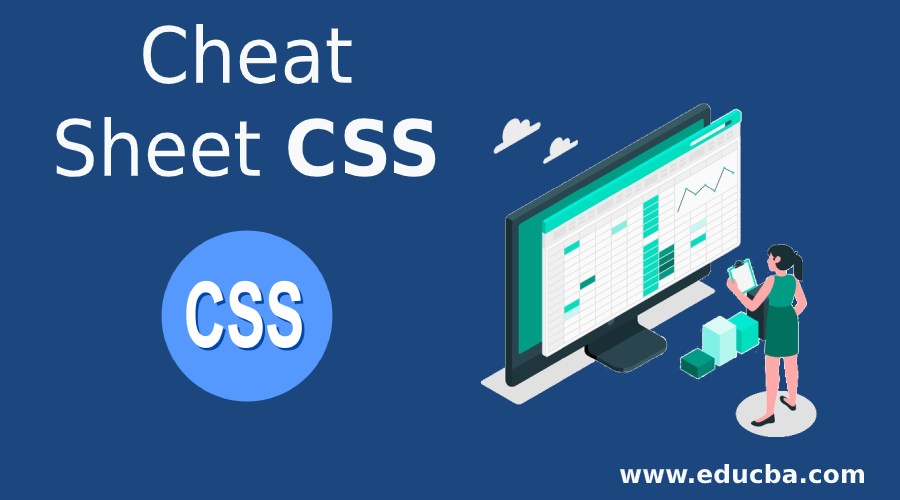Updated June 15, 2023
Introduction to Cheat Sheet CSS
Cascading Style Sheets, also known as CSS, is a style sheet language used to describe the presentation of a document written in a markup language like HTML. It simplifies the process of making web pages presentable, handling the look and feel of the web page. It allows control over features such as text color, font style, paragraph spacing, column alignment, background images and colors, and various other effects. The advantages of a CSS cheat sheet are that it saves time, the pages load faster, easy maintenance, superior styles, multiple device compatibility, and it Global web standards.
Commands and Content on Cheat Sheet CSS
The basic syntax of the cheat sheet CSS consists of a selector and declaration components. The selector component specifies the HTML element that has to be styled. The declaration component contains two or more properties and their specifications separated by semicolons. The declaration component always starts and ends with curly braces.
Below are the Cheatsheet CSS commands mentioned, which perform different kinds of operations:
| Specification | Command |
| Colors | Colors are specified using predefined color names or RGB, HEX, HSL, RGBA, and HSLA values. |
| Backgrounds | The background color property specifies the background color of an element |
| Borders |
|
| Margins | Margin property sets the properties of the margins in one declaration. |
| Padding | The property for setting the padding properties in one declaration is padding. |
| Height/Width | The height and width properties are used to specify the height and width of an element. |
| Outline | The outline-style property specifies the type of outline for an element. |
| Text | The color property is used to set the color of the text. |
| Fonts | The font-family property is used to set the font of the selected text. |
| Links | The text-decoration property is used to remove underlines from links, and the background-color property can specify the background color of links. |
| Lists | The list-style property sets the property of a list in one declaration. The list-style image specifies an image as the list-item marker. The list-style-position specifies the position of the list-item marker. The list-style-type specifies the type of list-item marker. |
| Tables | Border sets all the border properties in one declaration. The border-collapse specifies whether a border should be collapsed or not. The border-spacing is the distance or spacing between adjacent cells. The caption side specifies the placement of a table caption. The table layout sets the algorithm for the layout of a table. |
| Display | The display property specifies whether an element is displayed and how it is displayed. |
| Max-Width | In the process of specifying the width of a block element, the usage of max-width will improve the browser’s handling of small windows. |
| Position | The position property specifies the position of an element. |
| Overflow | The overflow property controls text too big to fit into an area. |
| Float | The float property specifies how an element should float. |
Free Tips and Tricks for Using Cheatsheet CSS Commands
Some essential tricks of cheat sheet CSS are as follows.
- Box-Model: The CSS Box-Model is essentially a box that wraps around every HTML element. It consists of margins, borders, padding, and content.
- Pseudo-Class: Is used to define a specific state of an element that involves styling an element differently when a user mouses over it, styling visited and unvisited links, and styling elements under focus.
- Pseudo-element: Style a part of an element, like the first letter, word, or line. It also helps insert content before and after the content of a component.
- Vertical Screen height: This is to specify the extent to which the content should occupy the screen.
- Style telephone links: It specifies the properties of links that open up as telephone numbers on the phone.
- Navigation Bars: A website needs to have good navigation. CSS transforms boring HTML menus into good-looking navigation bars.
Conclusion
Cheat sheet CSS, as a website-building tool, is very effective. Since the options for a better presentation of a website and adding useful features are more with CSS, it is much preferred.
Recommended Articles
We hope that this EDUCBA information on “Cheat Sheet CSS” was beneficial to you. You can view EDUCBA’s recommended articles for more information.





